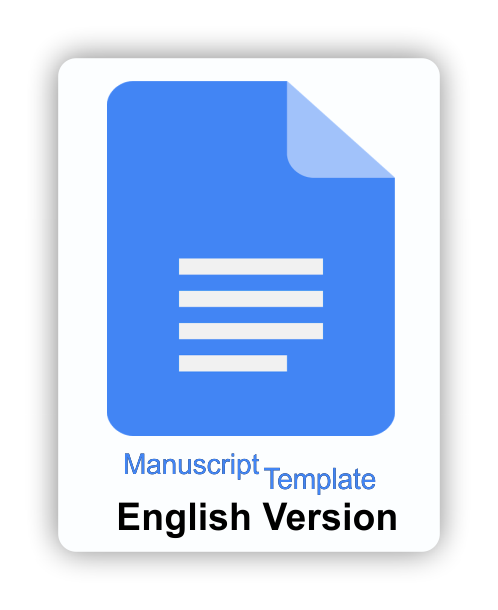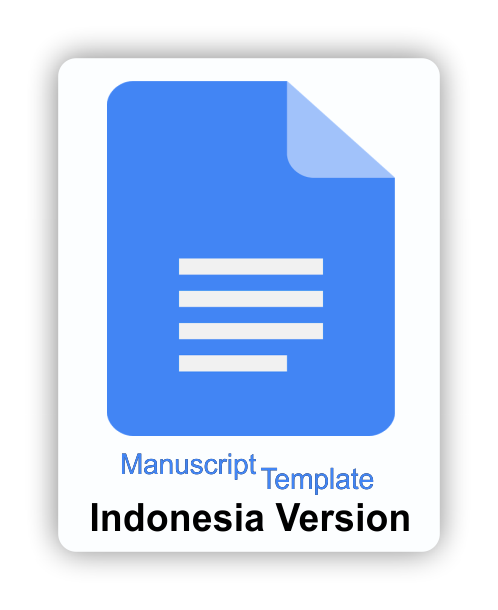HOTS checker: Quick reviewing cognitive levels of learning outcomes using large language models
Hardika Hardika, Universitas Negeri Malang, Indonesia
Dio Lingga Purwodani, Universitas Negeri Malang, Indonesia
Nabil Muttaqin, Universitas Negeri Malang, Indonesia
Abstract
Keywords
References
Abulhul, Z. (2021). Teaching strategies for enhancing student learning. Journal of Practical Studies in Education, 2(3), 1–4. https://doi.org/10.46809/jpse.v2i3.22
Albatti, H. (2023). A review of intended learning outcomes of English lessons and learning motivation. AWEJ: Arab World English Journal, 14(2), 205–220. https://doi.org/10.24093/awej/vol14no2.15
Alhazmi, A. K., Zafar, H., & Al-Hammadi, F. (2015). Framework for integrating outcome-based assessment in online assessment: Research in progress. 2015 Science and Information Conference (SAI), 217–221. https://doi.org/10.1109/SAI.2015.7237147
Amien, M. S., & Hidayatullah, A. (2023). Assessing students’ metacognitive strategies in e-learning and their role in academic performance. Jurnal Inovasi Teknologi Pendidikan, 10(2), 158–166. https://doi.org/10.21831/jitp.v10i2.60949
Arcas, B. A. y. (2022). Do large language models understand us? Daedalus, 151(2), 183–197. https://www.jstor.org/stable/48662035
Bowman, R. F. (2022). Cornerstones of productive teaching and learning. The Clearing House: A Journal of Educational Strategies, Issues and Ideas, 95(2), 57–63. https://doi.org/10.1080/00098655.2022.2033671
Caines, A., Benedetto, L., Taslimipoor, S., Davis, C., Gao, Y., Andersen, O., Yuan, Z., Elliott, M., Moore, R., Bryant, C., Rei, M., Yannakoudakis, H., Mullooly, A., Nicholls, D., & Buttery, P. (2023). On the application of large language models for language teaching and assessment technology. AIED2023 Workshop: Empowering Education with LLMs - the Next-Gen Interface and Content Generation, 1–25. https://doi.org/10.48550/arXiv.2307.08393
Chang, E., Demberg, V., & Marin, A. (2021). Jointly improving language understanding and generation with quality-weighted weak supervision of automatic labeling. Proceedings of the 16th Conference of the European Chapter of the Association for Computational Linguistics: Main Volume, 818–829. https://doi.org/10.18653/v1/2021.eacl-main.69
Charoensap, K., & Saeheaw, T. (2022). Customer experiences identification process using Bloom taxonomy and customer knowledge management. 2022 Joint International Conference on Digital Arts, Media and Technology with ECTI Northern Section Conference on Electrical, Electronics, Computer and Telecommunications Engineering (ECTI DAMT & NCON), 122–127. https://doi.org/10.1109/ECTIDAMTNCON53731.2022.9720405
Chen, S., Gao, S., & He, J. (2023). Evaluating factual consistency of summaries with large language models. Computation and Language, 1–12. https://doi.org/10.48550/arXiv.2305.14069
Crichton, S., & Kinsel, E. (2003). Learning plans as support for the development of learner identity: A case study in rural Western Canada. Journal of Adult and Continuing Education, 8(2), 213–226. https://doi.org/10.7227/JACE.8.2.7
Elkins, S., Kochmar, E., Cheung, J. C. K., & Serban, I. (2023). How useful are educational questions generated by large language models? AIED Late Breaking Results 2023, 536–542. https://doi.org/10.48550/arXiv.2304.06638
Gilbert, H., Sandborn, M., Schmidt, D. C., Spencer-Smith, J., & White, J. (2023). Semantic compression with large language models. 2023 Tenth International Conference on Social Networks Analysis, Management and Security (SNAMS), 1–8. https://doi.org/10.1109/SNAMS60348.2023.10375400
Goel, N., Deshmukh, K., Patel, B. C., & Chacko, S. (2021). Tools and rubrics for assessment of learning outcomes. In Assessment Tools for Mapping Learning Outcomes With Learning Objectives (pp. 1–44). IGI Global. https://doi.org/0.4018/978-1-7998-4784-7.ch013
Goštautaitė, D. (2019). Principal component analysis and Bloom taxonomy to personalise learning. Proceedings of EDULEARN19 Conference, 2910–2920. https://doi.org/10.21125/EDULEARN.2019.0780
Harden, R. M. (2002). Learning outcomes and instructional objectives: is there a difference? Med Teach, 24(2), 151–155. https://doi.org/10.1080/0142159022020687
Hyder, I., & Bhamani, S. (2016). Bloom’s taxonomy (cognitive domain) in higher education settings: Reflection brief. Journal of Education and Educational Development, 3(2), 288–300. https://jmsnew.iobmresearch.com/index.php/joeed/article/view/198
Koh, J. H. L. (2022). Designing for designerly ways of knowing: Creating learning design futures in higher education. In Design Praxiology and Phenomenology. Springer. https://doi.org/10.1007/978-981-19-2806-2_11
Krathwohl, D. R. (2002). A revision of bloom’s taxonomy: An overview. Theory Into Practice, 41(4), 212–218. https://doi.org/10.1207/s15430421tip4104_2
Ma, Z., Dou, Z., Zhu, Y., Zhong, H., & Wen, J.-R. (2021). One chatbot per person: Creating personalized chatbots based on implicit user profiles. SIGIR, 1–10. https://doi.org/10.1145/3404835.3462828
Maxwell, G. S. (2021). Defining and assessing desired learning outcomes. In The Enabling Power of Assessment (pp. 1–399). Springer. https://doi.org/10.1007/978-3-030-63539-8_3
Mehany, M. S. H. M., & Gebken, R. (2021). Assessing the importance and cognition level of ACCE’s student learning outcomes: Industry, educator, and student perceptions. International Journal of Construction Education and Research, 17(4), 333–351. https://doi.org/10.1080/15578771.2020.1777487
Mulcare, D. M., & Shwedel, A. (2017). Transforming Bloom’s taxonomy into classroom practice: A practical yet comprehensive approach to promote critical reading and student participation. Journal of Political Science Education, 13(2), 121–137. https://doi.org/10.1080/15512169.2016.1211017
Muse, H., Bulathwela, S., & Yilmaz, E. (2023). Pre-training with scientific text improves educational question generation (student abstract). Proceedings of the AAAI Conference on Artificial Intelligence, 16288–16289. https://doi.org/10.1609/aaai.v37i13.27004
Olsen, D. R., Keith, J., & Rosenberg, J. (2019). The quest for increased learning: Systematically aligning and assessing learning outcomes. 2019 8th International Congress on Advanced Applied Informatics (IIAI-AAI), 314–319. https://doi.org/10.1109/IIAI-AAI.2019.00070
Pallagani, V., Muppasani, B., Murugesan, K., Rossi, F., Srivastava, B., Horesh, L., Fabiano, F., & Loreggia, A. (2023). Understanding the capabilities of large language models for automated planning. Computer Science, 1–12. https://doi.org/10.48550/arXiv.2305.16151
Park, H. W., Grover, I., Spaulding, S., Gomez, L., & Breazeal, C. (2019). A model-free affective reinforcement learning approach to personalization of an autonomous social robot companion for early literacy education. Proceedings of the AAAI Conference on Artificial Intelligence, 687–694. https://doi.org/10.1609/aaai.v33i01.3301687
Pressman, R., & Maxim, B. (2020). Software engineering: A practitioner’s approach. McGraw Hill.
Pujawan, I. G. N., Rediani, N. N., Antara, I. G. W. S., Putri, N. N. C. A., & Bayu, G. W. (2022). Revised Bloom taxonomy-oriented learning activities to develop scientific literacy and creative thinking skills. Jurnal Pendidikan IPA Indonesia, 11(1), 47–60. https://doi.org/10.15294/jpii.v11i1.34628
Raj, H., Rosati, D., & Majumdar, S. (2022). Measuring reliability of large language models through semantic consistency. NeurIPS 2022 ML Safety Workshop, 1–7. https://doi.org/10.48550/arXiv.2211.05853
Ramanathan, C. (2022). Technologies for teaching learning process, its evaluations and assessments. In Development of Employability Skills Through Pragmatic Assessment of Student Learning Outcomes (pp. 1–18). IGI Global. https://doi.org/10.4018/978-1-6684-4210-4.ch003
Ramírez, M. D. V., & Gerena, L. (2010). Bilingual education from learner perspectives. In Handbook of Research on Bilingual and Intercultural Education (pp. 1–19). IGI Global. https://doi.org/10.4018/978-1-7998-2588-3.ch017
Ratner, N., Levine, Y., Belinkov, Y., Ram, O., Magar, I., Abend, O., Karpas, E., Shashua, A., Leyton-Brown, K., & Shoham, Y. (2023). Parallel context windows for large language models. Proceedings of the 61st Annual Meeting of the Association for Computational Linguistics, 6383–6402. https://doi.org/10.18653/v1/2023.acl-long.352
Rosson, M. B. (2014). Learning by design. In Innovative Practices in Teaching Information Sciences and Technology (pp. 75–83). Springer. https://doi.org/10.1007/978-3-319-03656-4_8
Sahu, P., Cogswell, M., Gong, Y., & Divakaran, A. (2022). Unpacking large language models with conceptual consistency. ICLR, 1–14. https://doi.org/10.48550/arXiv.2209.15093
Sarsa, S., Denny, P., Hellas, A., & Leinonen, J. (2022). Automatic generation of programming exercises and code explanations using large language models. ICER ’22: Proceedings of the 2022 ACM Conference on International Computing Education Research, 27–43. https://doi.org/10.1145/3501385.3543957
Schunk, D. H. (2012). Learning theories: An educational perspective. Pearson.
Sideeg, A. (2016). Bloom’s taxonomy, backward design, and Vygotsky’s zone of proximal development in crafting learning outcomes. International Journal of Linguistics, 8(2), 158–186. https://doi.org/10.5296/ijl.v8i2.9252
Sobral, S. R. (2021). Bloom’s taxonomy to improve teaching-learning in introduction to programming. International Journal of Information and Education Technology, 11(3), 148–153. https://doi.org/10.18178/ijiet.2021.11.3.1504
Stevani, M., & Tarigan, K. E. (2023). Evaluating English textbooks by using Bloom’s taxonomy to analyze reading comprehension question. SALEE: Study of Applied Linguistics and English Education, 4(1), 1–18. https://doi.org/10.35961/salee.v0i0.526
Tamkin, A., Brundage, M., Clark, J., & Ganguli, D. (2021). Understanding the capabilities, limitations, and societal impact of large language models. Computation and Language, 1–8. https://doi.org/10.48550/arXiv.2102.02503
Troitschanskaia, O. Z., Schlax, J., Jitomirski, J., Happ, R., Thees, C. K., Brückner, S., & Pant, H. A. (2019). Ethics and fairness in assessing learning outcomes in higher education. Higher Education Policy, 32(1), 537–556. https://doi.org/10.1057/s41307-019-00149-x
Wei, X., Saab, N., & Admiraal, W. (2021). Assessment of cognitive, behavioral, and affective learning outcomes in massive open online courses: A systematic literature review. Computers & Education, 163(1), 1–24. https://doi.org/10.1016/j.compedu.2020.104097
Whitelock, D., & Rienties, B. (2016). #Design4learning: Designing for the future of higher education. Journal of Interactive Media in Education, 2016(1), 1–3. https://doi.org/10.5334/JIME.417
Xiao, L., & Shan, X. (2023). PatternGPT: A pattern-driven framework for large language model text generation. Computation and Language, 1–14. https://doi.org/10.48550/arXiv.2307.00470
Zamir, S., & Jan, H. (2023). Assessment of papers of English of Sukkur BISE Sindh, Pakistan: An exploration of the reflection of Bloom’s taxonomy. Voyage Journal of Education Studies, 3(1), 220–240. https://doi.org/10.58622/vjes.v3i1.41
Zhang, H. (2021). Transfer training from smaller language model a preprint. ArXiv, 1–7.
Zorluoğlu, S. L., & Güven, Ç. (2020). Analysis of 5th grade science learning outcomes and exam questions according to revised Bloom taxonomy. Journal of Educational Issues, 6(1), 58–69. https://doi.org/10.5296/jei.v6i1.16197
DOI: https://doi.org/10.21831/jitp.v11i2.67174
Refbacks
- There are currently no refbacks.
Copyright (c) 2024 Dwi Soca Baskara, Hardika, Dio Lingga Purwodani, Nabil Muttaqin

This work is licensed under a Creative Commons Attribution-ShareAlike 4.0 International License.
Our journal indexed by:
View Journal Statistics


















.png)